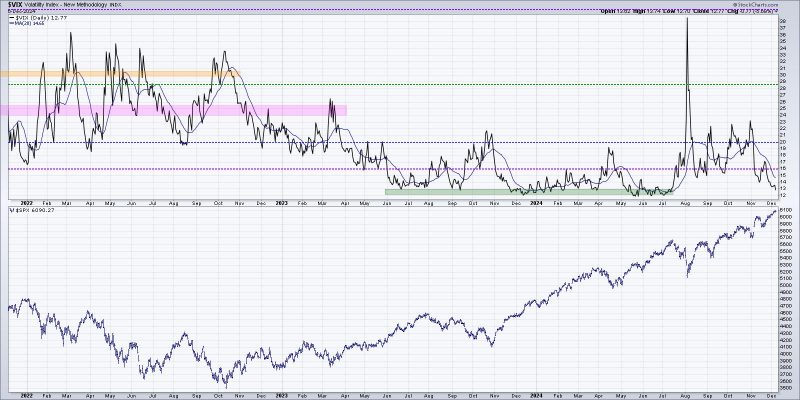As we approach the end of 2024, investors and analysts are keeping a close eye on key indicators and trends that could shape the financial landscape in the coming months. One of the most important charts that is being closely monitored is the performance of key stock indices and their relationship with bonds, currencies, and commodities. Understanding these dynamics is crucial for making informed investment decisions and managing risk effectively.
Looking at the chart provided, we can see a clear correlation between the movements of the S&P 500 index and the U.S. dollar index. Historically, these two assets have had an inverse relationship, with the dollar strengthening when stocks decline and vice versa. This relationship is based on various factors such as interest rate differentials, economic indicators, and geopolitical events that impact investor sentiment.
In recent months, we have seen heightened volatility in both the stock market and the currency market, as investors react to changing economic conditions and central bank policies. The chart highlights how closely these markets are interconnected and how shifts in one asset class can have ripple effects across others. For instance, a sharp decline in the stock market could lead to a flight to safety, causing the U.S. dollar to strengthen as investors seek refuge in safe-haven assets.
Another interesting aspect of the chart is the relationship between stocks and commodities, particularly gold and oil. Historically, gold has been seen as a hedge against inflation and economic uncertainty, while oil prices are influenced by supply and demand dynamics as well as geopolitical events. The chart shows how these assets have responded to various market conditions and how they can provide diversification benefits to a portfolio.
Furthermore, the chart also displays the performance of major global stock indices such as the FTSE 100, Nikkei 225, and DAX. These indices represent the performance of stocks in different regions and provide insights into the global economic outlook. By monitoring these indices alongside the S&P 500, investors can gain a comprehensive view of the broader market trends and make well-informed decisions about asset allocation and portfolio management.
In conclusion, the chart presented offers a valuable snapshot of the interplay between key financial indicators and asset classes as we head towards the end of 2024. By closely monitoring these relationships and understanding the factors driving market movements, investors can navigate the complex financial landscape with confidence and adapt their strategies to changing conditions. Staying informed and being proactive in response to market developments will be essential for achieving investment success in the months ahead.
